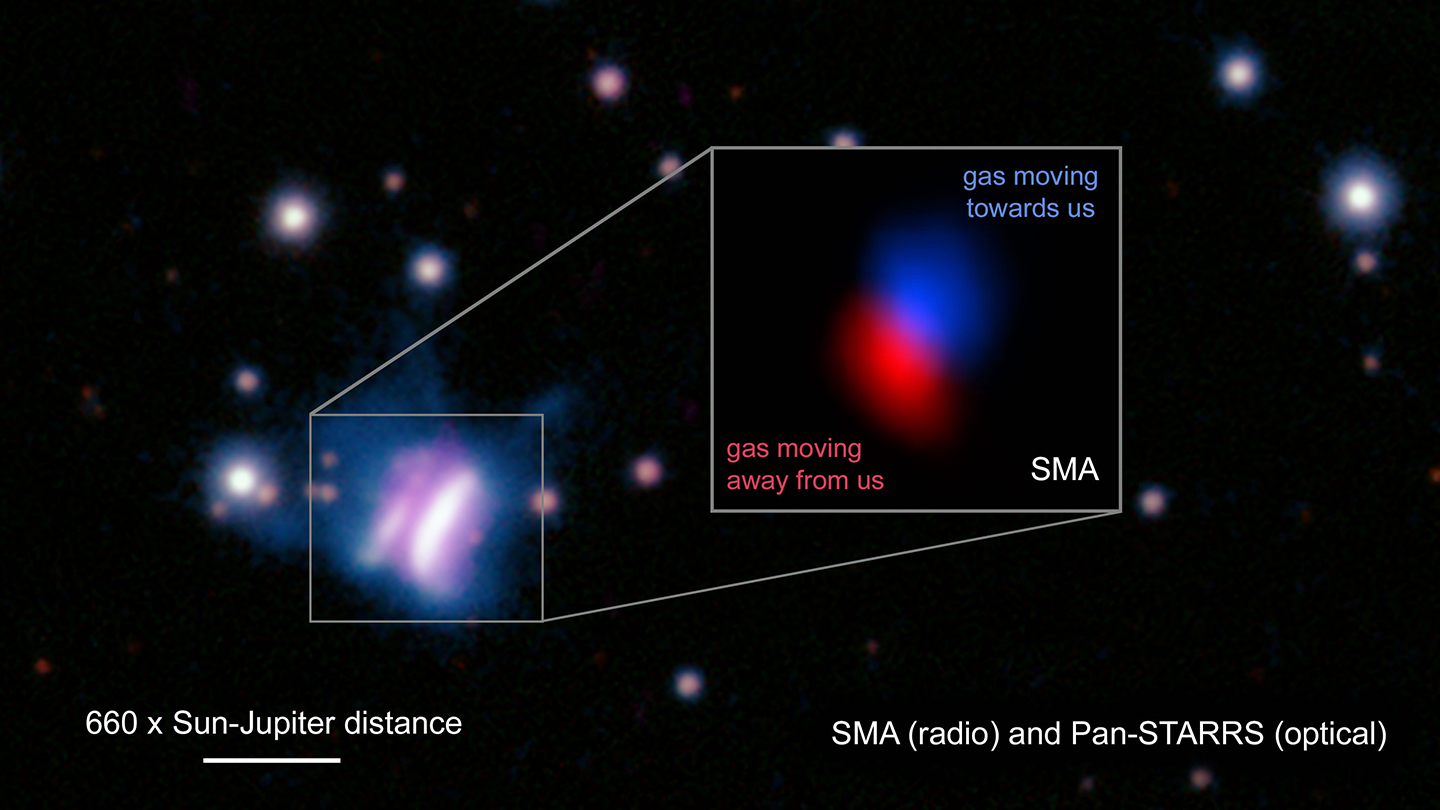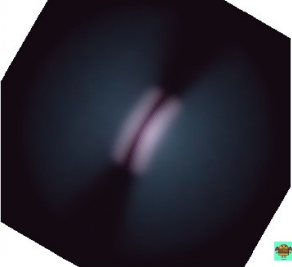The astronomical object Dracula’s Chivito has more than a cool name; it contains more material for forming planets than any other disk we’ve ever seen. In fact, it’s got about twice as many ingredients as the nearest counterpart we have found.
Officially known as IRAS 23077+6707, this disk makes the one from which the Solar System formed look puny. It’s about 3,300 astronomical units (the distance of the Earth to the Sun) wide, stretching to beyond fifty times the orbit of Neptune. When planets eventually form out of it, anything Jupiter-sized may struggle to get noticed by anyone studying the system. What living among such giants will mean for Earth-like planets remains to be seen.
Earth’s position relative to IRAS 23077+6707 means we see it almost entirely side-on, which presumably contributed to it not being noticed until recently, although astronomers are still trying to work out how they overlooked it. Instead of seeing a broad plane, it looks a little like a cross between a side-view of a reverse-colored Oreo cookie and a butterfly. Its most similar counterpart was named Gómez’s Hamburger after its founder. Noticing shadows that look like fangs at certain wavelengths, Dr Ciprian Berghea called it Dracula’s Chivito earlier this year, after a type of Uruguayan sandwich.
It’s just as well it has a name more memorable than IRAS 23077+6707, as this object is likely to feature heavily in the future of astronomy. Measuring the composition of a protoplanetary disk at this angle has unique challenges, but a team predominantly based at the Harvard Smithsonian Center For Astrophysics notes it also has advantages. The star at the center of the disk is obscured from our perspective, making it possible to see aspects that would otherwise be lost in the glare.
By combining scattered-light imaging and interferometric observations at millimeter wavelengths, the team notes that Dracula’s Chivito covers the largest known angular size of any protoplanetary disk. That’s extraordinary, because at an estimated distance of 1,000 light years, it’s a lot further away than many of the objects they compared it to. “What is perhaps most remarkable is that this source has until now gone unreported in the scientific literature,” the authors note.

The red and blue shift of its gas confirms we’re looking at a rotating protoplanetary disk.
Image credit: SAO/ASIAA/SMA/K. Monsch et al; Optical: Pan-STARRS
“What we found was incredible – evidence that this was the largest planet-forming disk ever discovered. It is extremely rich in dust and gas, which we know are the building blocks of planets.” First author Dr Kristina Monsch said in a statement.
The star at the disk’s center is large, but not exceptionally so, the team estimating it at 2-4 times the mass of the Sun.

A cleaned-up image makes the comparison to sandwiches clearer.
Image Credit: Berghea et al
Unusually, Dracula’s Chvito’s gas and dust emissions cover the same area of the sky, instead of the gas extending around twice as far, as is typical of young disks like this. Emissions are exceptionally bright at the wavelengths associated with carbon monoxide, suggesting high concentrations, a trait shared with Gómez’s Hamburger.
Monsch noted the disk may have already spawned its first planets, but the instruments used so far are not suited to detecting them. Either Hubble or the JWST, on the other hand, might be able to spot something, even at this distance. “We just have to look for them,” she told The Associated Press.
This research is published open access in the Astrophysical Journal Letters. The team that named Dracula’s Chivito has a paper accepted to the same journal currently available on ArXiv.org with overlapping findings, although it proposes the central star is 1.5-2.0 solar masses.
Source Link: Disk Called “Dracula’s Chivito” Has The Largest Collection Of Planet-Making Materials Ever Found